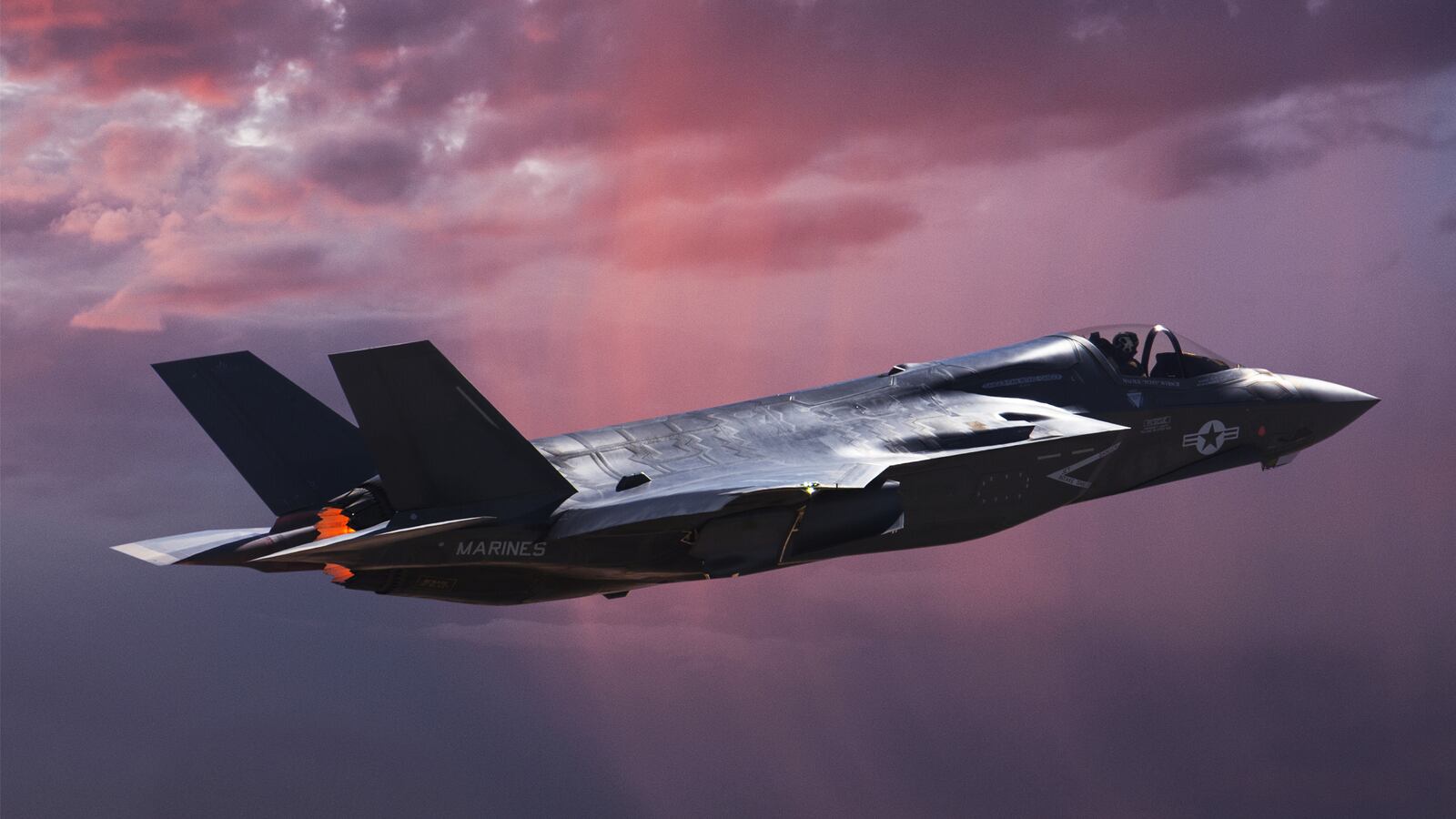The U.S. military has signaled that it might cancel essential upgrades for more than 100 early model F-35 stealth fighters flown by the Air Force, rendering the radar-evading jets incompatible with many of the latest weapons.
In that case, some 6 percent of the flying branch’s planned 1,700-strong F-35 fleet would be unfit for combat, sticking U.S. taxpayers with a $20 billion tab for fighters... that can’t fight.
Experts say the military never should have bought the planes the first place, as they rolled out of Lockheed Martin’s Fort Worth factory before the F-35’s design was complete and thoroughly tested—a deliberate strategy called “concurrency” that the military hoped would speed up the program’s progress.
“The risk that the services would be stuck with less-than-capable aircraft is one that the Pentagon knowingly took when leaders decided to overlap the development and testing of the program with the production,” wrote Dan Grazier, an analyst with the Project on Government Oversight in Washington, D.C.
Skipping upgrades for 108 older F-35As—“concurrency orphans,” Grazier dubbed them—is reportedly one option under consideration as the Pentagon tries to find money for scores of newer F-35s. “We’re looking at solution spaces to give our warfighters options,” Navy Vice Adm. Matt Winter, head of the F-35 program, told Flight Global. The military asked Congress to fund 70 F-35s in 2018 for $10.3 billion.
The F-35s in question mostly have the so-called Block 2B software, which the military calls the “initial warfighting” version of the jet’s complex computer code. F-35s with Block 2B software can carry just four different kinds of bombs and missiles—far fewer than the F-35 was designed to carry when the fully combat-capable Block 3C software is installed.
Jets with Block 3C code are also more maneuverable than Block 2B models are. To have any chance of surviving in combat, F-35s with Block 2B software would “need to avoid threat engagement and would require augmentation by other friendly forces,” according to the Pentagon’s testing agency.
A spokesperson for the F-35 program did not respond to a request for comment.
If the Air Force kept the 108 F-35s in Block 2B configuration rather than upgrading them, it would likely consign them to a strictly training role in the United States. The flying branch did something similar with its older F-22 stealth fighters. Instead of spending billions of dollars upgrading all 180 or so F-22s, the Air Force enhanced just 150 of the radar-evading jets... and assigned the remaining 30 to training squadrons.
The Navy and Marines also possess 81 F-35s with Block 2B software. It’s unclear whether they, too, could be passed over for upgrades.
Military officials and outside experts have warned for years that early F-35s would need extensive rework—and would be all but useless without them. In a controversial move in the early 2000s, the Pentagon decided to buy hundreds of F-35s before Lockheed had finished developing the plane and its software.
Critics said that this concurrency risked wasting billions of dollars on unproven weaponry. In 2012, Frank Kendal—then the Pentagon’s chief weapons-buyer—sided with the skeptics and declared concurrency to be “acquisitions malpractice.” By then the government had already bought scores of essentially incomplete F-35s.
Besides, concurrency has been popular with industry officials, senior officers and some lawmakers, who view it as a way of building a constituency for an expensive new weapons program before it proves, or disproves, itself. “Concurrency is not a development strategy,” Pierre Sprey, a former warplane designer, told The Daily Beast. “Instead, it is a political strategy intended to make megabuck programs impossible to cancel or shrink when they fail in test.”
As a political strategy, overlapping the design and production of the F-35 has worked. While the Air Force might wind up with more than 100 F-35 stealth fighters that can’t fight, no one is seriously proposing to cancel the program.






